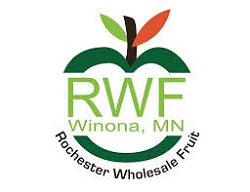When it comes to eating at home, healthy and convenient meals have often seemed like opposite ends of the spectrum. Whereas quick options were loaded with ingredients that didn’t support a balanced diet, healthy choices often required significant time for planning and preparation.
84.51°, the retail data science, insights and media company helping The Kroger Co. and its partners create customer-centric shopper journeys, says consumers want options that are both healthy and convenient.
These two trends — demand for protein-rich products and solutions for healthy, convenient meals — should not be considered in isolation, the company said in a news release. Instead, it says they are part of a broader shift towards holistic health as consumers recognize that health is multifaceted, encompassing not just diet but also lifestyle and overall well-being.
Among the findings from 84.51° research:
- High protein was a key nutritional benefit sought after by every age group, from Generation Z and millennials to Generation X and baby boomers.
- 63% of shoppers expressed a desire for new innovations in frozen foods, a traditionally convenient option.
- Shoppers are displaying increased interest in value-added produce, such as pre-cut and pre-washed fruits.
The Packer: Did the survey show particular fruits or vegetables consumers prefer in their meals? Are there any produce items viewed as staples for both convenience and health?
Myres: While we didn’t probe on particular fruits or vegetables, we do know the fastest-growing produce items in units for the past 52 weeks are grapes, garlic/herbs, berries and corn.
We also know that consumers are increasingly looking for ways to integrate health and wellness into all aspects of their lives, from the nutritional content of their food to the convenience of meal preparation. Since diet, lifestyle and overall well-being are top of mind, brands and retailers that recognize and respond to this comprehensive view of health will be better positioned to meet the evolving needs of their customers.
What were the preferences between fresh, pre-cut or prepackaged for convenience?
When looking at some of these categories’ dollar sales percent change versus a year ago, we see growth as people look to join their need for convenience, health and cooking at home:
- Pre-cut/pre-washed vegetables — 569%.
- Pre-cut/pre-washed fruit — 133%.
- 75% a store.
- 15% a restaurant (take out, delivery or drive-thru).
- 8% a restaurant (eaten at the restaurant).
- 2% other.
Reducing the mental effort required for meal planning and preparation is critical, as our research shows shoppers, especially Gen Z, feel burdened by the planning/prepping/cooking/cleaning involved in getting a meal on the table. They are looking for ways to make the process easier.
Are there any challenges to including more produce in meals at home?
We hear from shoppers that cooking at home allows them more control over saving money, portion sizes, waste reduction and allowing them to cook healthier options. But we also know that in our latest research, 58% of shoppers said they are extremely concerned about inflation and 73% have noticed price increases in the produce department.
Is there any data to show that recipes, cooking tips or demos encourage consumers to buy and use more produce at home?
Though we have not specifically asked if consumers turn to recipes, cooking tips or demos to buy and use more produce at home, shoppers tell us that they seek inspiration from social media, apps and blogs to keep their food-at-home menus exciting and fresh.
How important is seasonality for consumers’ choices for convenient, healthy meals?
Thirty-eight percent of consumers told us that they plan to spend more in the summer months on fresh produce, and the top three reasons were due to it being more readily available, the produce is fresher and more variety is available.
Looking at sales and units for fresh produce, we see elevated purchase behavior May-August.














